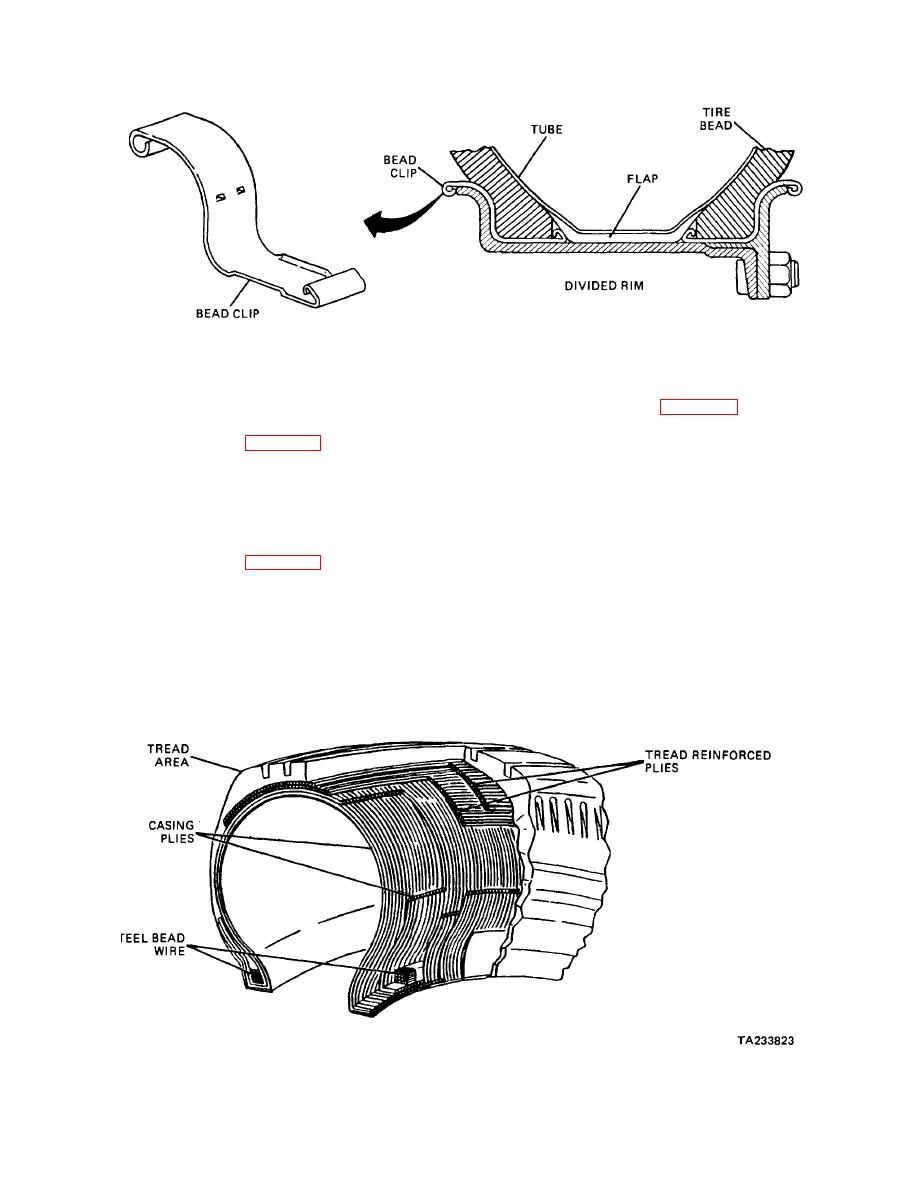
| Tweet |

Custom Search
|
|

|
||
 TM 9-8000
Figure 32-9. Bead Clips
Section IV. TIRES
c. Solid. Solid tires (fig. 32-12) generally are not
32-10. Tire Assembly Construction.
used in transportation vehicles because of their harsh
riding characteristics. They usually do not roll as freely
a. Radial. Radial tires (fig. 32-10) are constructed
as pneumatic tires and therefore require more power to
with casing plies perpendicular to the tread direction, with
drive them.
several layers of tread-reinforcing plies (steel or fabric)
just under the tread area. This construction permits
32-11. Types of Tires.
flexing of the tire with a minimum of tread distortion,
better traction, and a softer ride.
a. Tactical Tires. Tactical tires give good traction in
b. Bias. Bias-ply tires (fig. 32-11) are constructed
either direction in mud, snow, or on dirt; on temporary
of rayon, nylon, or polyester casing plies in a crisscross
roads; and for cross-country use. They also are practical
pattern wrapped around steel bead wires. These bead
for hard-surface roads.
These tires have a
wires prevent the tire from opening up and separating
nondirectional, mud-and-snow or cross-country tread
from the rim at high speeds. The casing plies give the
design with bar-type lugs. A nondirectional tread design
tire its shape. This construction may be found in use
indicates the tread pattern is the same, no matter which
today for standard commercial tires.
way the tire is mounted. A nondirectional tread gives
good traction in both directions.
Figure 32-10. Radial Tire Construction.
32-5
|
||
 |
||